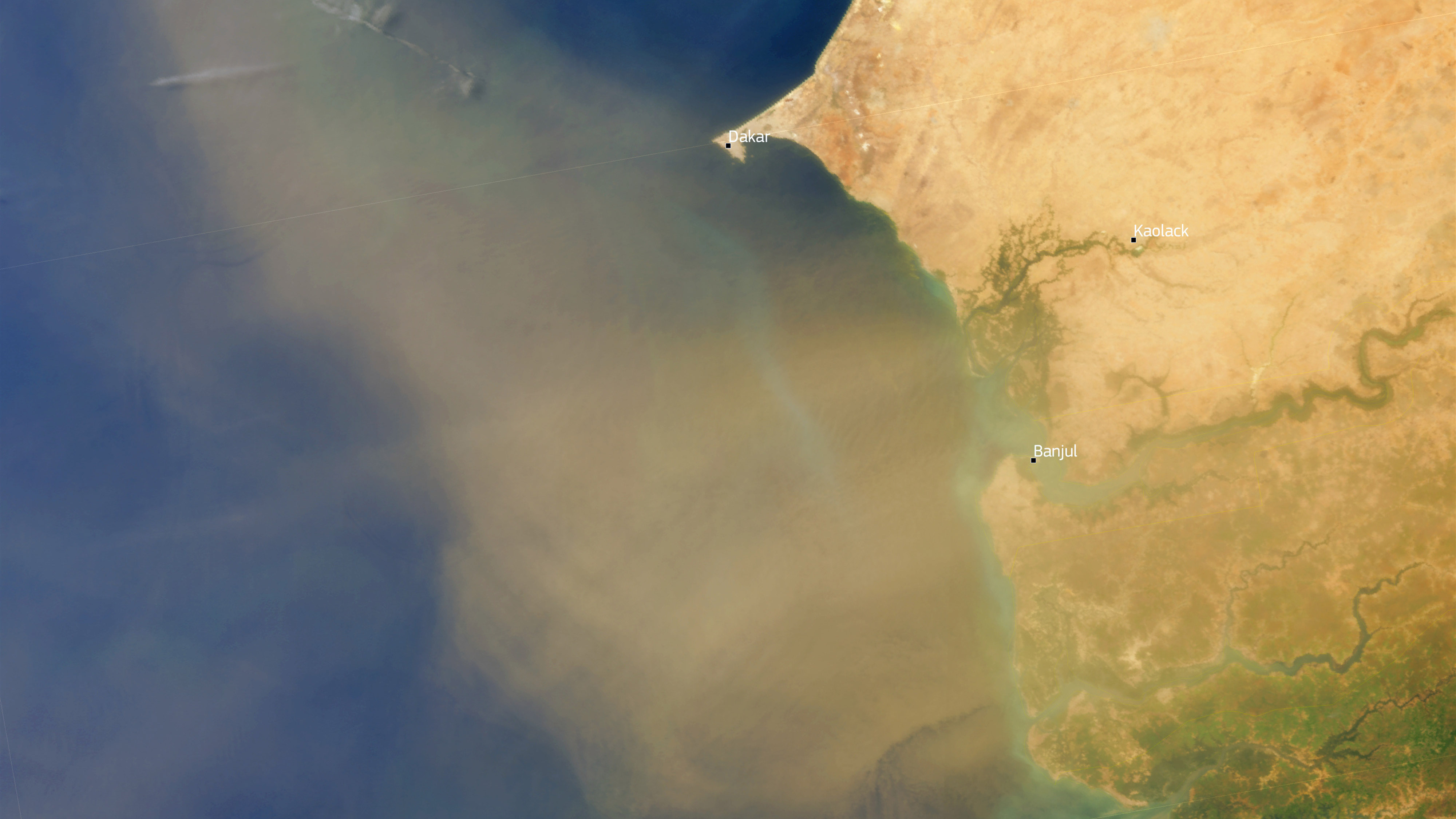NASA mission to monitor dust in Earth's atmosphere will blast off with SpaceX this week
The NASA spacecraft launches Thursday (July 14) on a SpaceX rocket.

A new NASA mission will watch over dust-ups from orbit to quantify their effect on Earth's climate.
Dubbed the Earth Surface Mineral Dust Source Investigation mission (EMIT), the experiment is scheduled to launch Thursday (July 14) for an International Space Station mission. It will ride to orbit aboard the SpaceX Commercial Resupply Mission 25 (CRS-25) inside the Dragon cargo spacecraft.
The mission aims to learn the composition of minerals that make up airborne dust. Mineral dust, also known as desert dust, "can influence weather, hasten snowmelt and fertilize plants on land and in the ocean," NASA's Jet Propulsion Laboratory (JPL) said in a statement in May.
Related: 10 devastating signs of climate change satellites can see from space
The dust can also travel incredibly large distances in Earth's atmosphere. "Particles from North Africa can travel thousands of miles around the globe, sparking phytoplankton blooms, seeding Amazonian rainforests with nutrients, and blanketing some American cities with grit while also absorbing and scattering sunlight," JPL officials noted.
Researchers have spent decades mapping the pathways of dust to better inform climate change models, but what is lacking is an understanding of particulate composition, Natalie Mahowald, EMIT's deputy principal investigator and an Earth system scientist at Cornell University in New York, said in the same statement.
In practical terms, EMIT aims to learn whether dust warms or cools the planet and how that changes over time, which will require more information about the dust's composition.
Breaking space news, the latest updates on rocket launches, skywatching events and more!
Dust-producing desert regions tend to be undersampled in the data because most of the existing information comes from 5,000 sites that are in more farmable regions, where commercial and agricultural researchers seek information on growing crops.
"Normally in climate models, we model dust as yellow — the average color of all types of dust — but if you've ever gone to a desert region, you’ll know that sand is not all one color," Mahowald said. "So this assumption that it's uniform across the globe doesn't reflect what's happening in reality."
EMIT, which will be mounted aboard ISS, aims to map mineral dust sources from an altitude of 250 miles (400 kilometers). The instrument will focus on analyzing particle color and composition of 10 dust varieties, particularly dark-red iron oxide dust associated with strong atmospheric warming.
"Knowing which kinds of dust prevail on the surface in each region will provide new information about the composition of particles lifted and transported through the air. With these insights, climate scientists can hone their understanding of mineral dust’s regional and global climate effects," JPL officials wrote.
The instrument uses a spectrometer that breaks sunlight reflected by Earth into distinct colors showing the dust's elemental composition. It will be able to see land strips about 50 miles (80 km) wide and continuously monitor these regions for change during the mission's duration.
With the EMIT data, principal investigator Robert Green of JPL stated, "we'll be on track to map the world's dust-source regions and understand how dust heats and cools the planet, as well as how that might change under future climate scenarios."
Follow Elizabeth Howell on Twitter @howellspace. Follow us on Twitter @Spacedotcom or Facebook.

Elizabeth Howell (she/her), Ph.D., was a staff writer in the spaceflight channel between 2022 and 2024 specializing in Canadian space news. She was contributing writer for Space.com for 10 years from 2012 to 2024. Elizabeth's reporting includes multiple exclusives with the White House, leading world coverage about a lost-and-found space tomato on the International Space Station, witnessing five human spaceflight launches on two continents, flying parabolic, working inside a spacesuit, and participating in a simulated Mars mission. Her latest book, "Why Am I Taller?" (ECW Press, 2022) is co-written with astronaut Dave Williams.


